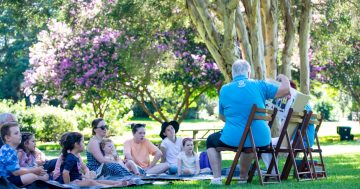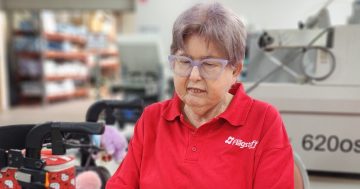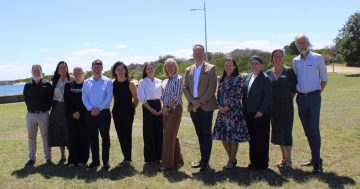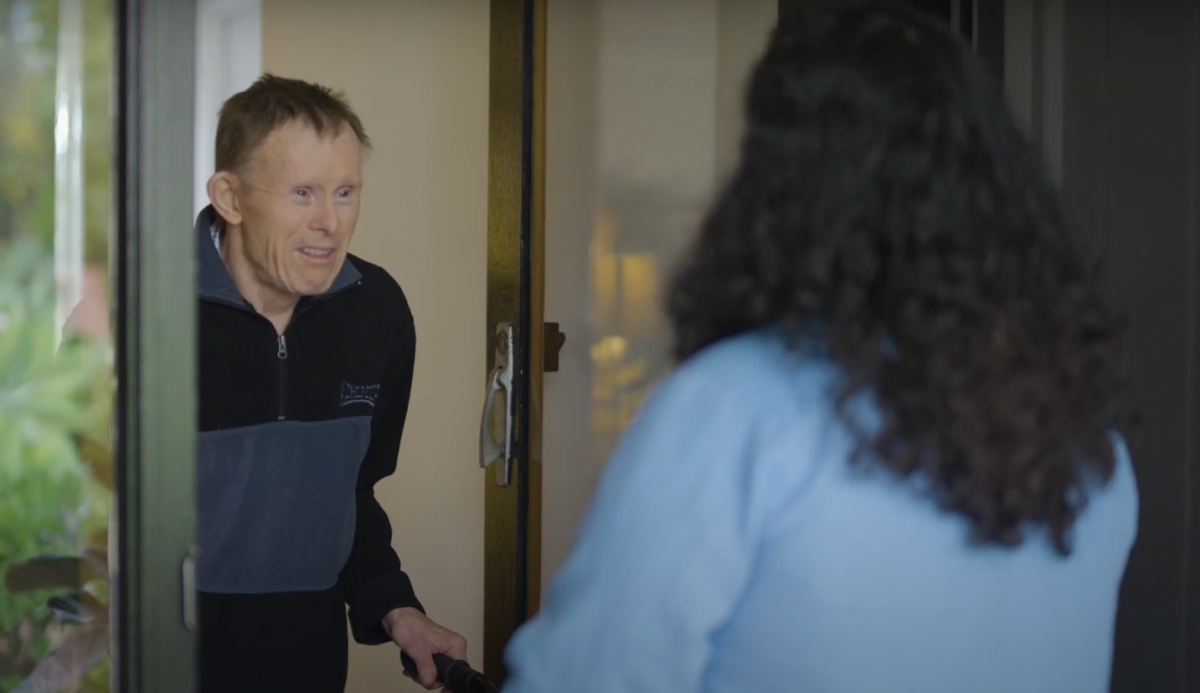
Flagstaff’s EMBER and Street Mate campaigns are helping fill a gap in emergency management. Photos: Flagstaff.
When bushfires ravaged the South Coast less than four years ago, Illawarra disability service provider Flagstaff realised that emergency communication was not getting through to some of our community’s most vulnerable people.
Now the organisation has created and expanded an initiative to ensure that people with a disability are prepared for any future disaster and that emergency personnel are equipped to help them.
Flagstaff Marketing and Projects Specialist Belinda Franklin said stark issues with emergency messaging first became apparent in 2020 when some of their supported workers were still making the trip to Wollongong to attend work despite the bushfire risks at the time.
“We identified a gap around emergency messaging and preparedness,” she said. “People with disabilities, especially intellectual disabilities, didn’t actually understand a lot of the messages coming from emergency personnel and the wider community, or what they needed to do.”
Executive Manager Marketing and Communications Alison Turner said the evidence that something needed to change continued to grow.
“We also looked into the Royal Commission into the fires and the Royal Commission into people with disability and their vulnerability and found that emergency preparedness was high on the agenda for both.”
Flagstaff created the EMBER program to give people with a disability the tools they need, which included access to resources, checklists and a go-bag.
“The backpack itself has some basic starter kits, so it has a face mask, drink bottle, some checklists that people can add to and a pocket radio with batteries,” Belinda said.
They also designed two apps in collaboration and consultation with people with disabilities, which prompted key changes like the use of cartoon characters rather than realistic imagery.
“When we spoke to people with disability they didn’t want to see anybody in emergency uniform,” Belinda said. “It was triggering for some people or they thought they were in trouble.”
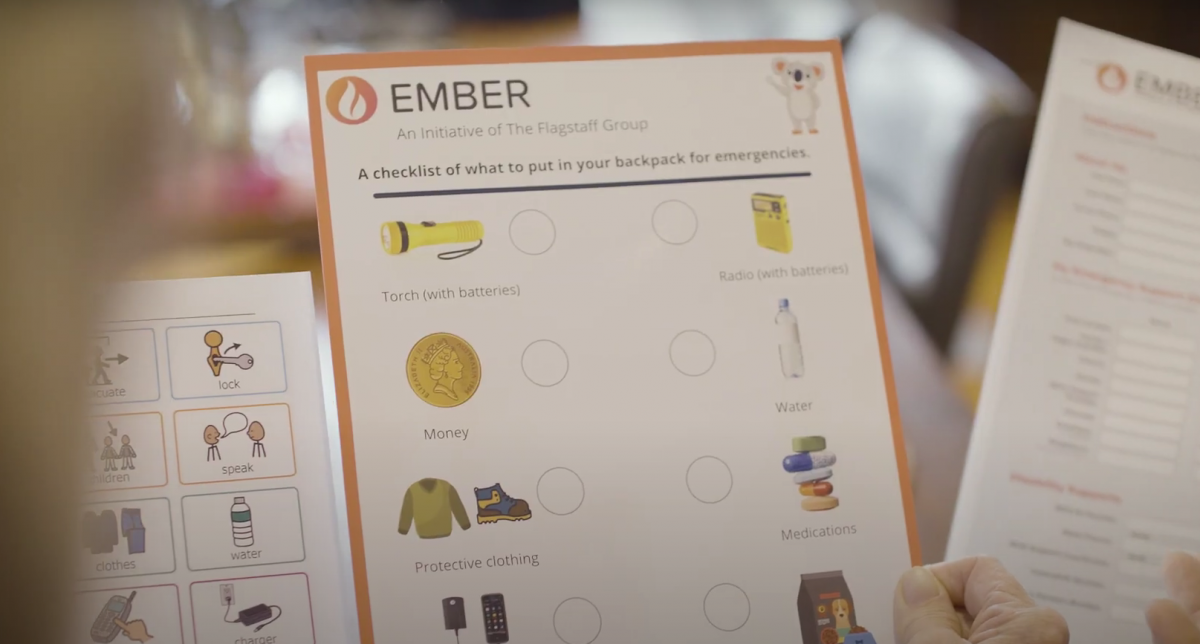
EMBER initiative included checklists, apps and backpacks to help people with disabilities prepare for emergency situations.
The non-verbal communicator app also uses images to help relay messages and remove barriers in times of crisis.
“The idea is it’s not just for the person with disability but the emergency personnel when they encounter somebody who is non-verbal, or someone who might be verbal but in an emergency situation they’re highly anxious and just can’t relay messaging,” Belinda said.
NSW Police Illawarra South Coast Regional Emergency Management Officer Jenna Conran said it helps personnel in high-stress scenarios.
“It basically allows this vulnerable community to have that communication resource that makes that process a lot easier and a bit less stressful,” she said. “It allows that clear communication so that emergency services and other agencies can address their needs appropriately.”
Now Flagstaff has started the second stage of the program, which focuses on how the emergency personnel and local government can support people with disabilities through these scenarios.
“We are very much pushing this program out pre-bushfire season to all of the agencies,” Jenna said. “Fire and Rescue has taken it on board, some of the local RFS are looking at incorporating it into their Get Ready Weekend program. The emergency services are gravitating more towards it so they can be using it and be aware of it before an emergency event just makes it a lot easier.”
Through collaboration with local councils from Campbelltown to Shoalhaven, they have created kits to be distributed at evacuation centres in times of emergency, as an extra level of support for people with a disability.
“Within the kits, there’s noise cancelling headphones, tactile toys, we’ve even got pop-up tents,” Belinda said. “If a council has to open a church hall, they’re not going to have a quiet area when there are three hundred people.”
The organisation has also launched a new campaign called Street Mate calling on the community to connect with their vulnerable neighbours.
“What we’re trying to do is encourage neighbours to look in their street, look to see if there’s anyone with a disability or who needs some extra help, and if they’re able to support them through the Street Mate campaign,” Alison said.
But all these resources and campaigns are not only exclusive to people with a disability.
“Once you design something for people with disability, the whole community benefits,” Belinda said. “We’re finding that with the aged care sector who’ve got people in walkers or who have had a stroke and we’ve had an enquiry from Throat Cancer Australia to say this is great for hospitals.”
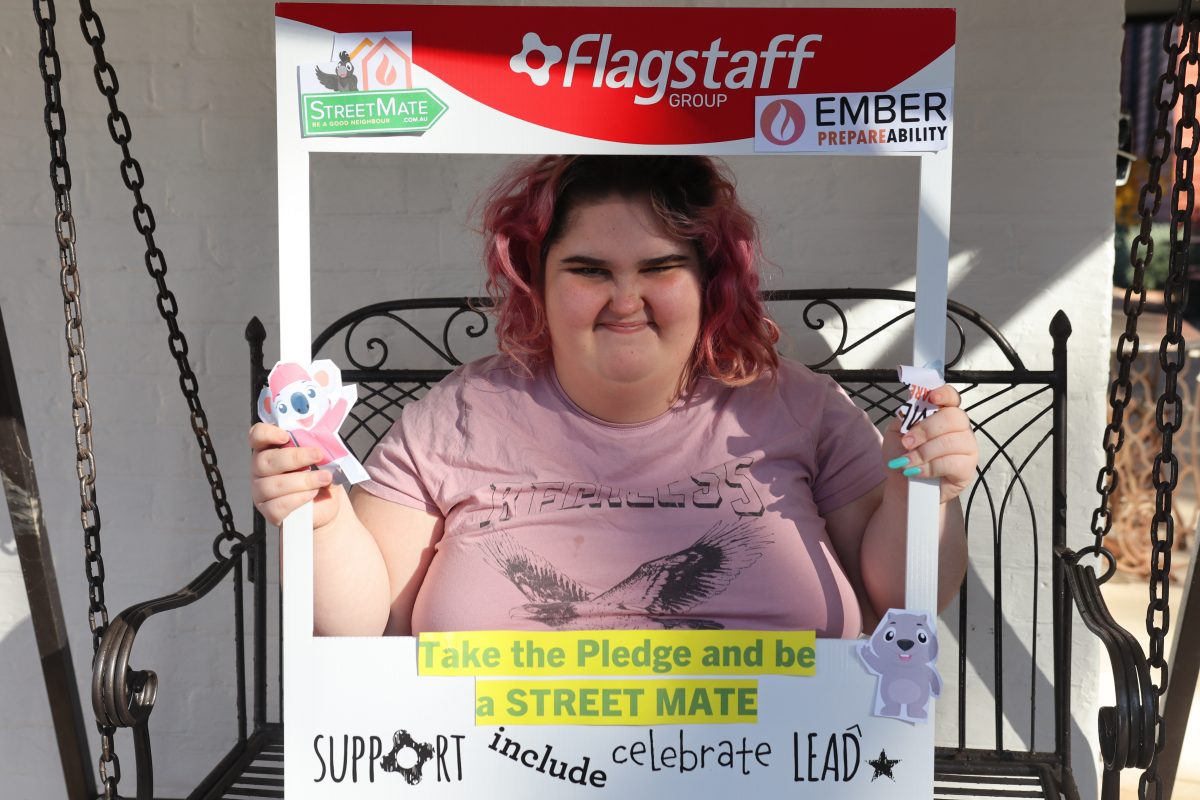
Flagstaff has just launched its second stage of the EMBER initiative ‘Prepareability’.
She added that EMBER is already being utilised by other providers right across the country in different settings.
“It’s free to use and we found that outside the emergency preparedness, occupational therapists and speech pathologists are actually using this in their day-to-day work, so we’ve really identified a gap with that.”
And although the program has become a one-stop shop for emergency management, it’s designed to be used in conjunction with existing resources, not instead of them.
“We don’t want to replace, we want to collaborate and add to the resources out there,” Alison said. “There are some great resources out there but it just depends on the person and what they’re comfortable with and we’ve got to give them a choice because that’s what life’s about.”
For more information and resources visit the EMBER website.








